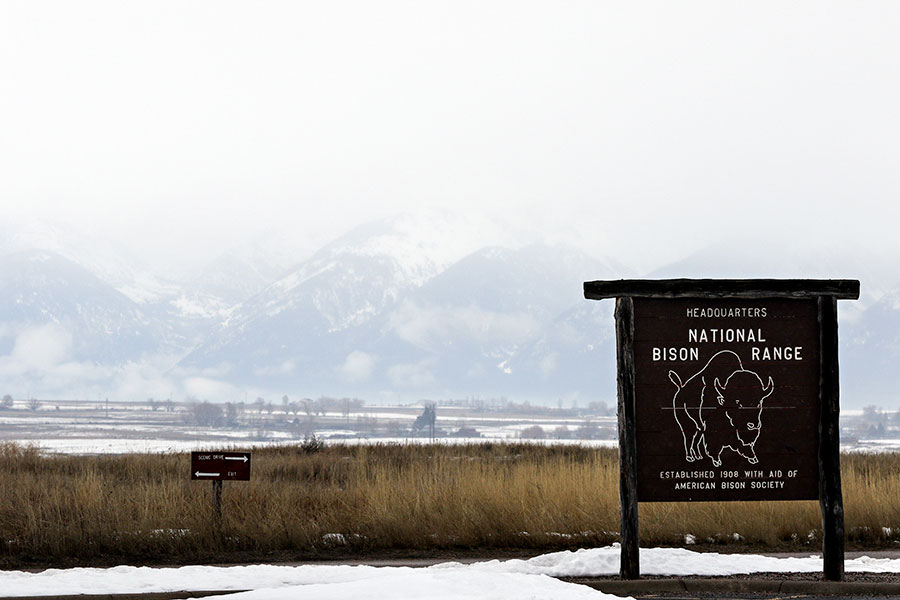Red Sleep Mountain, now officially reunited with the Flathead Indian Reservation, is fully open to the public for the season, offering visitors the chance to roam through the National Bison Range.
The Bison Range has two main roads that allow visitors to tour the area and look for megafauna. Prairie Drive is a 14-mile round trip gravel road that follows along the Alexander Basin and is open year round. Red Sleep Drive is a 19-mile, one-way gravel road that takes vehicles to the top of Red Sleep Mountain. The scenic drive loops through the heart of the range and takes roughly two hours to complete.
Red Sleep Drive opens at 7 a.m. with the last car allowed to begin the route at 6 p.m.. Because the gravel road is narrow and includes steep ascents and declines, vehicles over 30 feet long, motorcycles, bicycles and trailers are not permitted. Trailers may be unhooked at the Visitor Center parking lot for the duration of a visit.
President Teddy Roosevelt established the National Bison Range in 1908 on a 19,000-acre swath of land carved out of the Flathead Indian Reservation at the base of the Mission Mountains. It was the first time Congress appropriated tax dollars specifically for the conservation of wildlife, making it one of the first established wildlife refuges in the nation, though it was done without the consent of the Confederated Salish and Kootenai Tribes (CSKT).
American Bison Society purchased the original herd of 40 bison and released them into the refuge in 1909. Today, the bison population is 300-500 animals, roaming the range alongside elk, whitetail and mule deer, pronghorn antelope, bighorn sheep, black bears and more than 200 species of birds.
In December, Congress passed the Bison Range Restoration legislation, which gave the range to federal trust ownership for the CSKT. In January, the Tribe began a two-year transition period to move control from the U.S. Fish and Wildlife Service (USFWS) to the Tribe.

Because the Range is no longer under USFWS management, it no longer receives revenue to cover management costs from federal funding sources. This means that Federal park passes, including the America the Beautiful and Golden Age passes are not recognized.
The entire Bison Range is a fee use area, including the Day Use Area. The single-day fee is $10, or an annual day use pass can be purchased for $20. There is no charge for CSKT members with Tribal identification.
Over the next few months the Visitor Center will be undergo a remodel and new signs will be placed around the range. The museum and new gift shop are projected to open in June.
The Bison Range gate opens at 6 a.m. and closes at 8 a.m. every day, while the visitor center opens an hour later. CSKT COVID-19 guidelines are in place and face coverings must be worn when entering the building.
The entrance to the Bison Range is at Moiese, just off U.S. Highway 93. For more information visit www.bisonrange.org or call (406) 883-2888.
